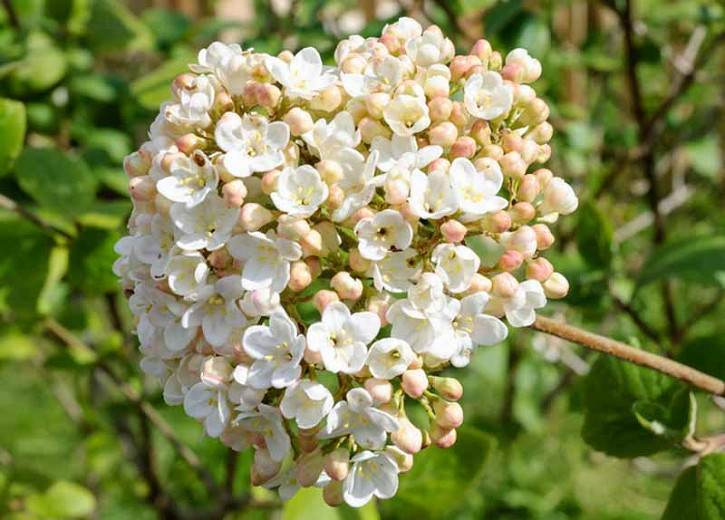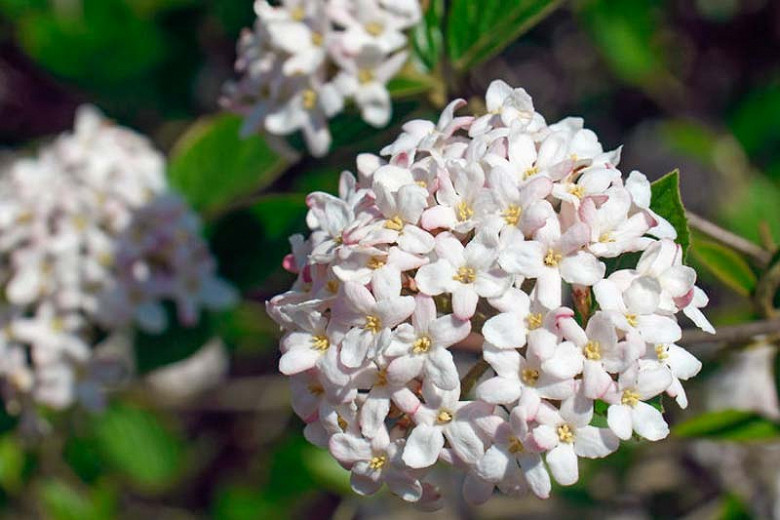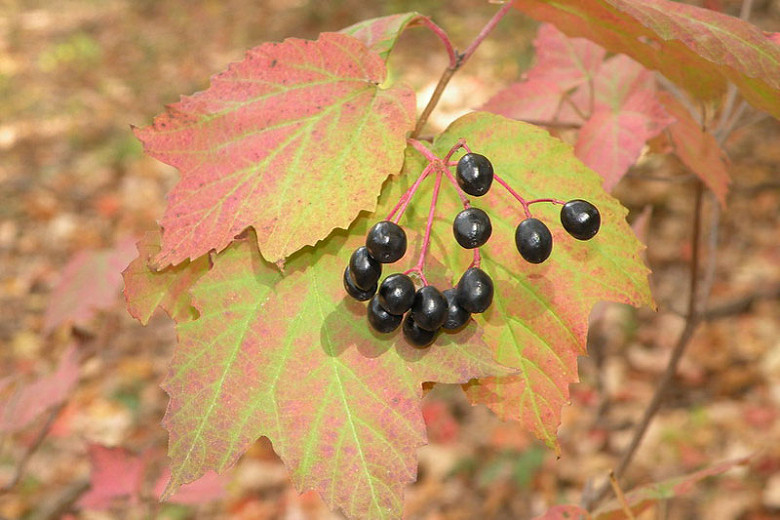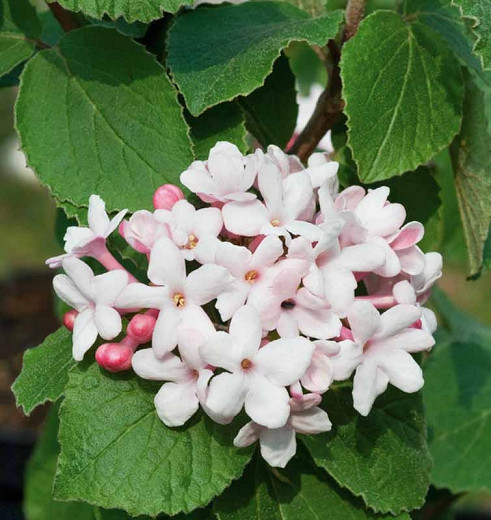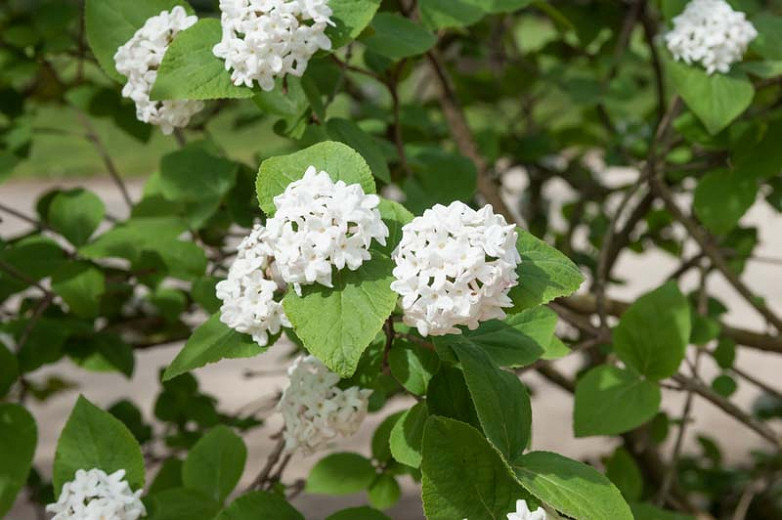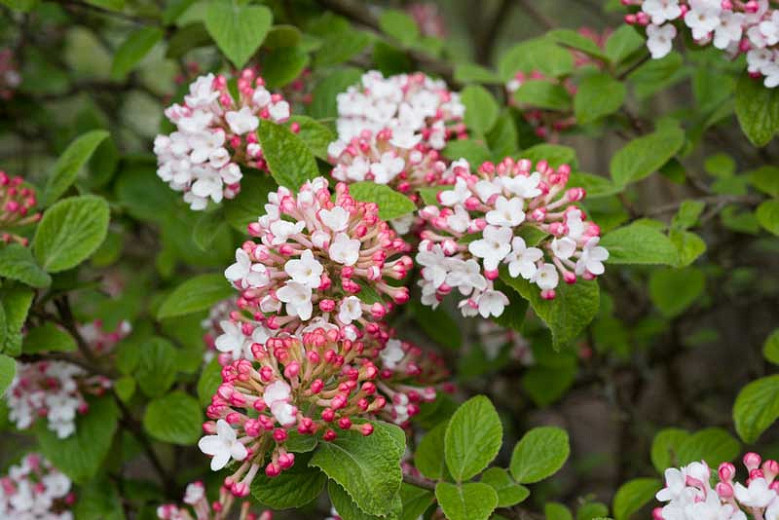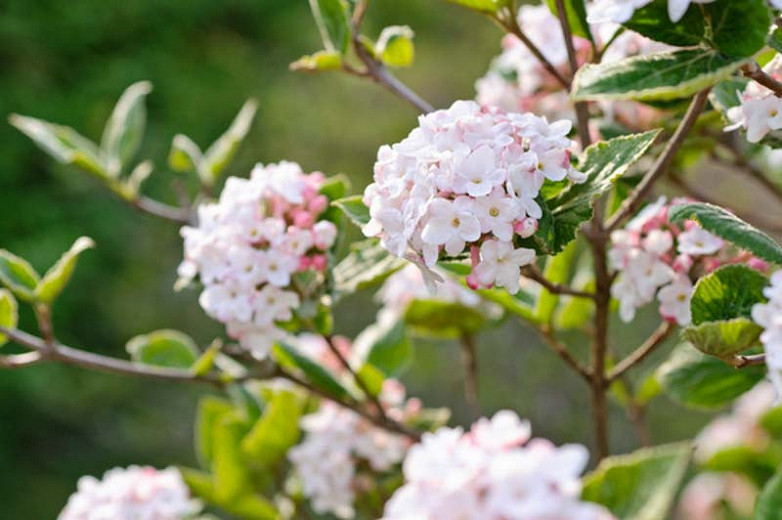Viburnum × carlcephalum (Fragrant Snowball)
Blooming later than most viburnums, Viburnum × carlcephalum (Fragrant Snowball) is a large, rounded, deciduous shrub with dark oval green leaves that turn a beautiful reddish-purple in the fall. In late spring, large rounded snowballs, up to 5 in. across (12 cm), packed with up to 100 pink buds open to delightfully fragrant, pink-tinged white flowers. They are followed by clusters of red berries which ripen black. Hidden by the foliage, the fruits are however not particularly showy. Fragrant Snowball is a cross between Viburnum macrocephalum var. keteleeri and Viburnum carlesii. To have the best cross-pollination and fruit display plant in groups rather than as specimens. Perfect for the shrub border, as a flowering hedge or as a handsome specimen.
- Grows up to 6-10 ft. tall and wide (180-300 cm). Vase-shaped when young but maturing rounded
- Recipient of the prestigious Award of Garden Merit of the Royal Horticultural Society
- A full sun or part shade lover, this plant is easily grown in average, moderately fertile, humus-rich, medium moisture, well-drained soils. Tolerates a wide range of soil types. Some drought tolerance once established.
- Perfect as a specimen plant or in shrub borders, makes striking hedges and screens and lovely foundation plantings. Plant your Viburnum near high traffic areas to enjoy its wonderful fragrance.
- Attractive to butterflies, hummingbirds and birds.
- Low maintenance, this plant has no serious insect or disease problems but watch for leaf spot and aphids.
- Prune as required immediately after flowering.
- Propagate by softwood cuttings in summer.
- Fruit if eaten can cause a mild stomach upset.
Requirements
| Hardiness | 6 – 8 |
|---|---|
| Heat Zones | 5 – 8 |
| Climate Zones | 3, 3A, 3B, 4, 5, 6, 7, 8, 9, 10, 11, 14, 15, 16, 17, 18, 19, 20, 21, 22, 23, 24 |
| Plant Type | Shrubs |
| Plant Family | Viburnum |
| Exposure | Full Sun, Partial Sun |
| Season of Interest | Spring (Late)Summer (Early,Mid,Late)Fall |
| Height | 6' – 10' (180cm – 3m) |
| Spread | 6' – 10' (180cm – 3m) |
| Spacing | 72″ – 120″ (180cm – 300cm) |
| Water Needs | Average |
| Maintenance | Low |
| Soil Type | Chalk, Clay, Loam, Sand |
| Soil pH | Acid, Alkaline, Neutral |
| Soil Drainage | Moist but Well-Drained, Well-Drained |
| Characteristics | Fragrant, Plant of Merit, Showy, Fruit & Berries |
| Tolerance | Drought |
| Attracts | Birds, Butterflies, Hummingbirds |
| Garden Uses | Beds and Borders, Hedges and Screens |
| Garden Styles | Coastal Garden, Informal and Cottage, Traditional Garden |
